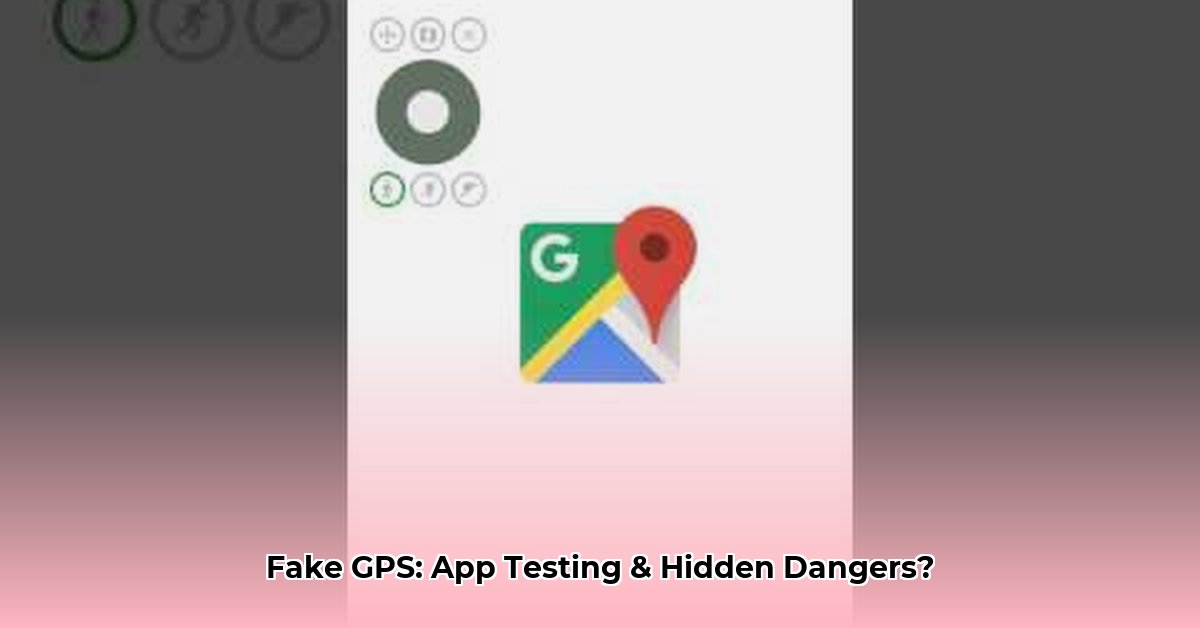
Fake GPS location apps, such as "Fake GPS Location - GPS Joystick," offer a dual-edged sword: valuable tools for software developers testing location-based applications, but also readily exploited for fraudulent activities and security breaches. This article delves into the app's functionality, legitimate uses, potential for misuse, and the broader security implications of location spoofing.
Functionality and Features
"Fake GPS Location - GPS Joystick" allows users to override their device's actual GPS coordinates, presenting a false location to applications. This is achieved through a virtual joystick interface, enabling users to manually pinpoint a location on a map (a user-friendly interface for altering location data). Key features include:
- Joystick Control: Users drag a joystick on the map interface to change their reported location.
- Route Simulation: The ability to create and follow virtual routes, simulating movement over time. This allows for realistic location changes over a simulated period.
- Speed Adjustment: Users can control the simulated speed of movement, adding realism to location spoofing.
- GPX File Import/Export: Compatibility with GPX files allows the import and export of predefined routes, facilitating streamlined location simulations. (GPX: a common file format for storing GPS data).
These features together empower users to simulate movements and locations with varying degrees of realism.
Technical Deep Dive: How it Works
The app's precise mechanism for manipulating GPS data remains undisclosed, but it likely involves intercepting and modifying location signals at either the hardware (GPS chip) or software (operating system) level. This likely includes sophisticated algorithms to generate realistic data, simulating factors like acceleration and speed changes to avoid detection. The lack of transparency around these algorithms presents a security challenge, as it complicates the assessment of its detectability.
Legitimate Use Cases: App Development
For developers of location-based applications, the ability to simulate various locations is invaluable for thorough testing before release. This removes the need for physical travel to diverse locations, streamlining and accelerating the development process. Examples include testing the accuracy of location services in ride-sharing apps or ensuring proper functionality of a weather app across different geographical regions.
Potential for Misuse: Fraud and Security Risks
The ease of use inherent in "Fake GPS Location - GPS Joystick" presents significant risks. Malicious actors can utilize the app for:
- Fraudulent Activities: False location data can be used to claim incorrect locations for location-based services (e.g., ride-sharing apps, delivery services), resulting in financial gain.
- Gaming Cheats: Location-based games often rely on a player's physical location for gameplay, making a similar technique of location spoofing a straightforward way to gain an unfair advantage.
- Security Circumvention: Some security systems rely on location verification for authentication. Location spoofing can potentially bypass these security mechanisms.
These actions pose considerable risks, ranging from personal account compromises to legal consequences.
Security Implications: Detection and Mitigation
The widespread availability of such apps highlights vulnerabilities in location-based security mechanisms. While several anti-spoofing techniques exist, they are constantly challenged by evolving spoofing methods. Developers and security professionals are engaged in an ongoing "arms race" to develop more robust detection and mitigation strategies. The effectiveness of existing security measures remains a key area of concern. Does current technological understanding allow for reliable detection of all forms of GPS spoofing?
Market Landscape and Future Trends
The popularity of "Fake GPS Location - GPS Joystick" and similar apps suggests a growing market driven by both legitimate and illegitimate needs. The prevalence of these apps on app stores, alongside the risk of finding malware-infected versions outside of official app stores, underscores an ongoing challenge. It is plausible that future developments will include:
- Advanced Detection Methods: Incorporating AI and machine learning to identify patterns indicative of location spoofing.
- Improved Anti-Spoofing Technologies: Developing more resilient systems that are less susceptible to manipulation.
- Increased Regulation: Strengthening laws and regulations to curb malicious use of location spoofing technologies.
Conclusion: Responsible Development and Usage
"Fake GPS Location - GPS Joystick" presents a powerful technology with both beneficial and detrimental applications. Its legitimate use for software development is undeniable, yet the potential for fraud, cheating, and security breaches cannot be ignored. The future requires a collaborative effort—among developers, security professionals, and lawmakers—to ensure responsible development, robust detection measures, and stringent regulations to mitigate the risks associated with location spoofing. The need for transparency regarding app functionality and robust anti-spoofing technologies is paramount.
⭐⭐⭐⭐☆ (4.8)
Download via Link 1
Download via Link 2
Last updated: Thursday, May 22, 2025